
Why FAQ Pages Are Almost Always a Bad Idea (And What to Do About It)
Your FAQ page may be doing more harm than good to your business. Here’s why it’s not essential to your ecommerce success (and what you can do instead).
“You shouldn’t have a FAQ page.”
Of all the pointers we regularly give to new clients, that’s the one that most often raises eyebrows. Many (maybe most) ecommerce managers erroneously believe that FAQ pages rank right alongside the About page and Contact page as necessary components of a professionally designed ecommerce website.
We’re here to tell you that they aren’t, and here’s why: FAQ pages tend to become the dumping ground for sloppy content, lazy SEO, and poor customer insight.
In our opinion, FAQ pages are where good content goes to die. Share on XNevertheless, ecommerce site owners love FAQ pages. They’ve been told FAQs are one of the first things visitors seek when they arrive.
SEO gurus say FAQs are a magnet to search engines, and many customer service managers prefer sending prospects to an FAQ page rather than providing a meaningful interaction.
Despite all this, the FAQ page is almost always a really bad idea.
Does this mean you should abandon your FAQ content? Nope! We recognize that ecommerce shoppers still have questions, and it’s still your job to provide them with answers.
In this article, you’ll learn why we don’t recommend traditional FAQ pages and what to do instead.
What’s Wrong with FAQ Pages?
You may be thinking our rant on the evils of the FAQ page is a little over the top. We don’t think so. If anything, we’re holding back. We’re frustrated that so many brands see FAQ pages as solutions when really these pages are just giving them a false sense of security.
Let’s talk about why even the best FAQ pages are problematic.
FAQ pages can disrupt conversions
Your true prospects almost always come to your website to find something they’re seeking. They are interested in what you sell, and they want to know more about either the products themselves or special offers for those products.
But visitors don’t run directly to your FAQ page as soon as they land on your ecommerce website. Nobody stops there first. They visit an FAQ page in response to a failure to find the information they need. This means that an FAQ page is a distraction from the conversion sequence.
For instance, let’s say Mike is looking for a new fishing pole. He’s concerned about the quality of the materials, but the product page doesn’t tell him much. He’s already in a position to buy, but now he has to navigate away from a commercial page to visit your ecommerce FAQs.
Will Mike add a product to the cart? We can’t say for sure, but the odds are a lot lower than if the information was presented to him organically where he expected it.
This issue presents itself all the time in regards to shipping concerns. Too many sites force buyers to click to a separate shipping policy page. Instead, this information should be available at the place and time customers start to wonder about it.
There’s no reason you can’t add shipping information to your category, product, cart, and checkout pages. Generally speaking, the fewer steps visitors need to take to buy from you, the more sales you’ll make.
High ranking FAQ pages aren’t helpful
Ecommerce SEO has always been a challenge. Your pages are typically light on content (lighter than blog posts on other sites, that is), so getting an FAQ page to rank for search terms feels like a win. But all you’ve done is attract folks to a non-commercial page on your site, hoping they’ll wander into a purchase.
Instead, it would be better to have all of that content directed at your product pages – the pages that generate revenue. This way when a customer visits your site from Google, they will step into your conversion sequence.
You don’t need FAQ pages to get found on the first page of organic search results. What you need are things like web pages that load quickly, strong metadata, and content relevant to your products. Do this right, and you’ll have happy visitors who find what they’re seeking and like the way you present that information enough to stay and interact.
Relying on an FAQ page for SEO is a lazy and ineffective tactic. It may be helpful for a content-poor website, but it’s not necessary for a properly written ecommerce website. If you aren’t happy with the state of your site’s copy, check out our full guide on writing website copy that converts.
Relying on an FAQ page for SEO is a lazy and ineffective tactic. Share on XFAQ pages are poor customer service
Let’s face it: Most FAQ pages aren’t composed of frequently asked questions at all. The content on the page is invented by someone on the marketing team. Hopefully the chosen questions reflect reality, but they’re almost never pulled from a deep knowledge of what customers are actually asking. You can’t tell us that this question wasn’t added by an over-eager marketer.
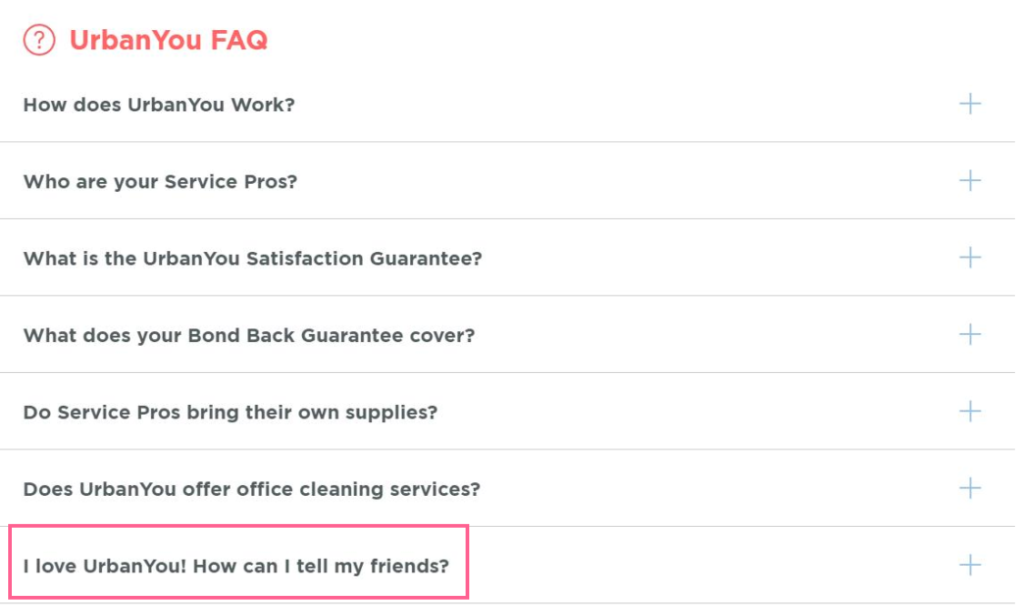
The sad truth is that customer service and marketing are like neighbors who wave to one another when they’re mowing the lawn, but never sit down over a meal and talk. The relationship is surface-level at best.
Yes, it’s good to make information available so customers can solve their problems on their own. And yes, it’s good for customer support to have on-demand answers to common questions, even if those answers are available publicly.
But too often, the support team’s response is to just link the customer to the FAQ page to figure out their problem on their own. This is one of the best ways to lose a sale for two reasons:
- The customer had one question, but you sent them to a page of information. Now they have to sleuth through your copy to find the solution. This is a friction-heavy experience.
- FAQ pages are notoriously written to defend the company’s shortcomings rather than to intrigue and guide the customer along the path to a purchase. In many cases, ecommerce FAQs avoid answering tough questions if the answer isn’t positive, thereby defeating the entire purpose of the page and introducing more friction.
Furthermore, poorly designed FAQ pages often add more complexity than shoppers can tolerate. For instance, notice how this page has three separate shipping questions, each with its own page. The customer is forced to click through all three to truly understand the shipping situation.
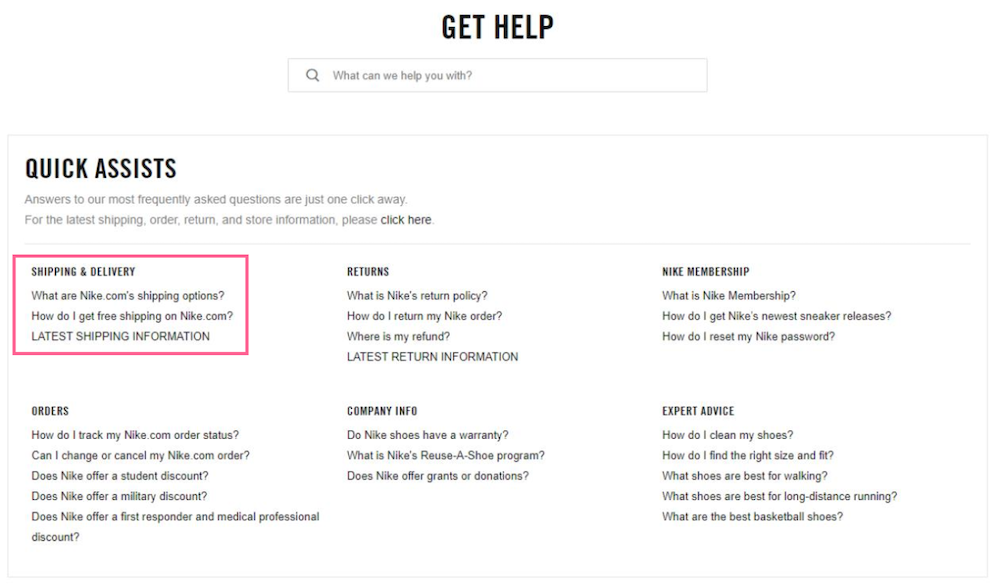
Other than for highly complex product and service types, there’s only one situation in which an FAQ page is a good idea: If your site design, SEO, and customer service functions are still under development, the FAQ page can bail you out enough to get the site actively available to accept orders. In other words: FAQ pages are a last resort tactic at best.
The FAQ page is a last resort tactic at best. Share on XHow to Discover Your Customers’ FAQs
Before we talk about educating your customers without FAQ pages, we should first discuss the questions themselves. What do your customers need to know and when do they need to know it?
Like we said earlier, most ecommerce FAQ pages are developed by marketers who assume the kinds of questions their customers might ask. It’s all a guessing game because they don’t take deliberate steps to uncover their problems.
There’s no shortcut here. You have to put in the time to figure out what your prospects want and then provide it in the right places.
Step 1: Get your customer service team involved
Your customer service and support team is your most direct line to your customers. They talk to your customers every day. They answer the phone. They read emails. These front liners hear everything. They do their best to help solve real problems—often problems your website should solve instead.
And like we said, one complainer represents a much larger group of people who are all suffering from the same problem. So if one person complains that they can’t find your shipping terms, you have to assume that many people have dealt with the same issue silently and abandoned your site without saying a word.
Sit down with your customer service team and find out what their average day is like. Who calls? For what reasons? What are their specific questions and complaints?
Then ask yourself if any of those questions and complaints can be resolved on your site’s pages. Listen to them. Make the changes. Rinse and repeat at least once each quarter.
Let’s say you routinely receive complaints like this. This customer just wants to know the status of his order, but he’s struggling to communicate with anyone on your team. If you get a lot of these questions, you might take steps to 1) make their order status accessible on your site, and 2) make your contact information clearer.
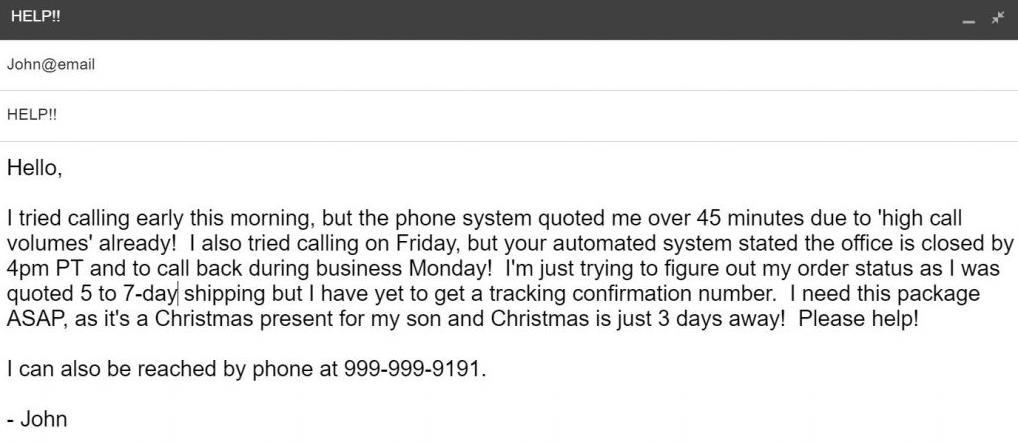
Check out this article for more on how to get what you need from your customer service team: 9 Great Questions that Will Improve Your Customer Experience.
Step 2: Keep a close watch on customer reviews and feedback
Reviews are another great place for feedback. Reviews indicate that the reviewer felt so strongly about an issue – good or bad – that they were compelled to let others know.
Reviews come from a variety of places: your own website, review sites, business directories, your Google My Business listing, and more. Take those reviews seriously; they can affect your sales substantially.
You can employ a third-party review tracker or set up your own internal system for monitoring reviews. The important thing is that you do it. When someone praises your business, thank them. When someone complains about your business, thank them too—then set the matter straight.
But the real value is that reviews and comments can provide invaluable feedback. If a user complains about an issue, you can be sure that dozens – perhaps hundreds – of other people have dealt with that same problem without bringing it to your attention. This makes feedback a valuable list of potential improvements you need to investigate and include in your site structure.
Use them to uncover trouble spots on your site, and fix them. For example, if customers are always stating that the sizing chart is incorrect, take efforts to fix the problem with more accurate information.
Check out this customer review. They couldn’t give five stars because part of the cash back program was difficult. This store owner should be grateful for this feedback. Now they can explain the cash back program better on their site. They should also consider implementing the customer’s advice and just make it automatic.
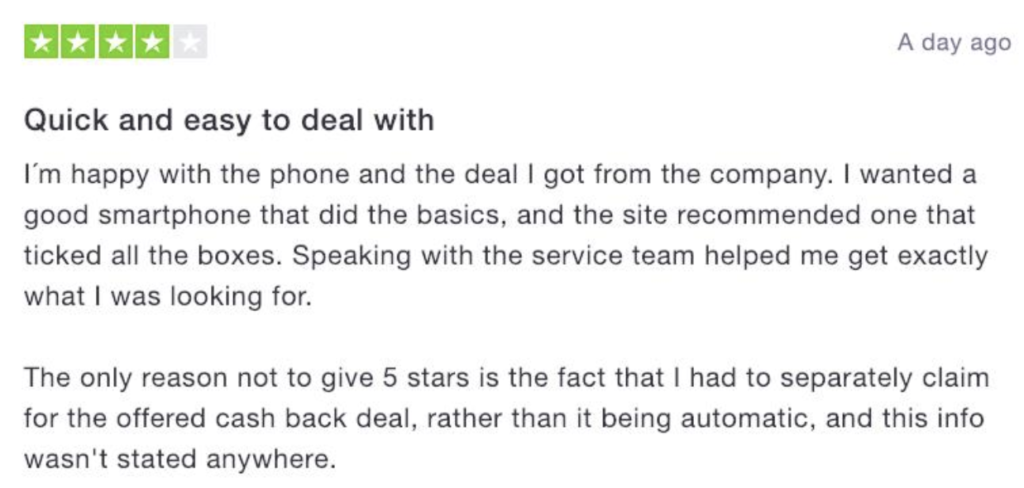
Here’s another example. This customer complains that the pocket isn’t large enough for his shoes. Could that information be added to the product page to help future buyers?

Step 3: Comb through your analytics
Your ecommerce analytics are valuable tools to assess a key variable that matters more than most: your shoppers’ behavior. You should always treat what they tell you with a bit of suspicion, but their behavior is typically more honest.
Check your analytics to discover how your visitors move through your site with a user flow report. They can show you the path people typically take. Yours will look something like this:
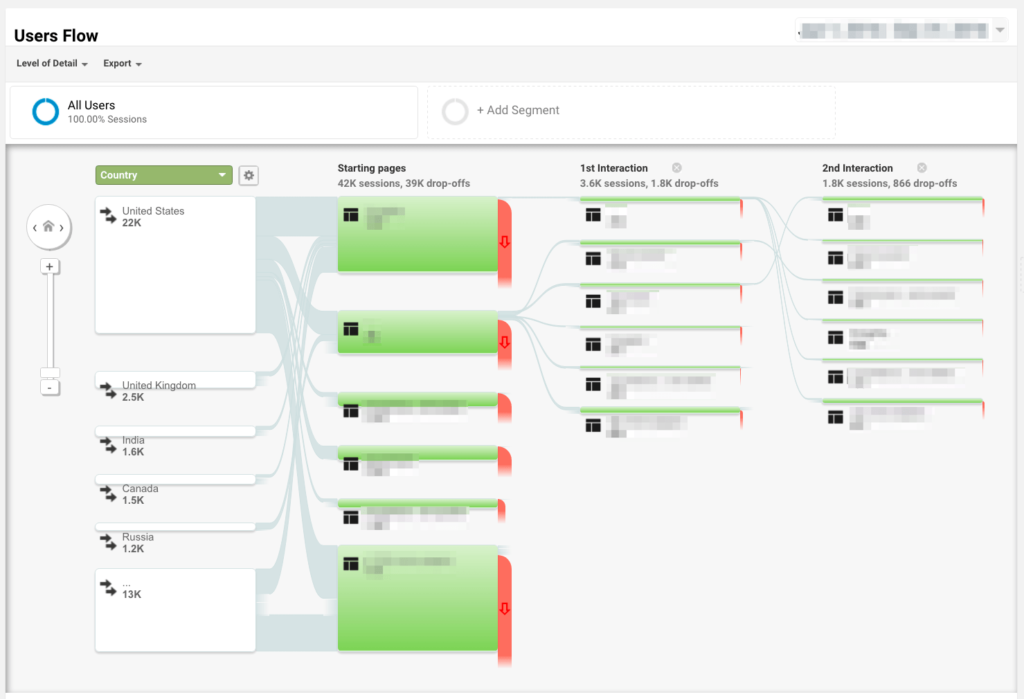
For instance, if shoppers leave your product pages to visit your returns and exchanges page, ask yourself how you can serve them that information earlier so they don’t divert from the conversion sequence. (If you need help understanding the flow, let us know).
If you review your user flow report and notice that many abandon your site at checkout before reaching your “thank you” page, you should ask, “What’s happening at checkout that turns people away?” Are they dismayed by additional fees? Do you lack their preferred payment option?
Event tracking is helpful here. By setting up events in your analytics tool for certain actions, you can measure the number of people who engage that event. For example, if you create an event for scrolling down the page, you might learn that only a fraction of shoppers scroll, indicating that your critical information should appear higher on the page.
Enjoying this article?
Subscribe to our newsletter, Good Question, to get insights like this sent straight to your inbox every week.
We find heat maps to be powerful sources of information as well, even on your existing FAQ page. When we used a heat map to analyze the FAQ page from one of our clients (an identity protection service). This tells us which parts of the page shoppers cared about the most.

This heat map study told us that most visitors had fundamental questions, such as…
- Why should I trust you?
- Is your site secure?
- Is it safe to give you my confidential information?
Naturally, the audience for that kind of service is highly skeptical. Those are critical bits of information we wanted users to have, but the client wasn’t providing clear answers early in the conversion sequence. The client was jumping into selling the product without establishing trust with their prospects.
Step 4: Scour incoming email for patterns
Maybe you don’t have a dedicated customer service team but use a general info@yourbrand email address for customer inquiries. It might be linked to a contact form as well. Someone should be responsible for checking that email inbox regularly. Anything less than daily is not enough. The more it’s checked, the better.
The next step is to begin looking for patterns in the questions those emails contain, just as you did for your customer service emails. Odds are that some of the challenges your website visitors face are coming up repeatedly.
Step 5: Repeat this process continuously
Your website exists to serve the needs of your customers. Ecommerce operates in a continually changing environment, and that change needs to be met with equally dynamic internal calibration. You should never say, “We finally know everything about our customers!” Instead, take every opportunity you can to genuinely attend to feedback from your website visitors.
How to Educate Customers Without FAQ Pages
Okay, so you’re ready to abandon your FAQ page. But your customers still have questions that need to be addressed. The next step is to present answers to those questions throughout your website in reasonable places.
Where should you place this key information? You have some options, but it usually falls somewhere within the primary conversion sequence. The conversion sequence represents our customers travel through your website and it generally looks like this:
Home page > category page > product page > cart page > checkout page
That said, you can’t depend on all customers to follow the entire conversion sequence. Some customers arrive directly on the category or product pages. And not all customers will bother with the cart page, preferring to transition straight to checkout. So it’s not like you can just fill your home page with information and expect to satisfy everyone.
Furthermore, you aren’t limited to just one place. If a particular piece of information is especially important, you might put it on every page so your customers can’t miss it.
Your FAQ information doesn’t necessarily have to appear in the traditional question-and-answer format. That format is useful when customers look up their problems on a page, but your goal is to address the problem before the customer ever experiences it. This is key to creating a truly frictionless experience.
FAQ implementation example
Let’s say you poured through your emails, support tickets, analytics, and reviews. You learned that customers repeatedly abandon the conversion sequence to investigate your shipping terms. They want to know how much it costs, when you’ll process their order, and when they will receive the delivery.
Since your goal is to give your customers information before they feel compelled to seek it, you might add your shipping details to a sidebar on your product pages.
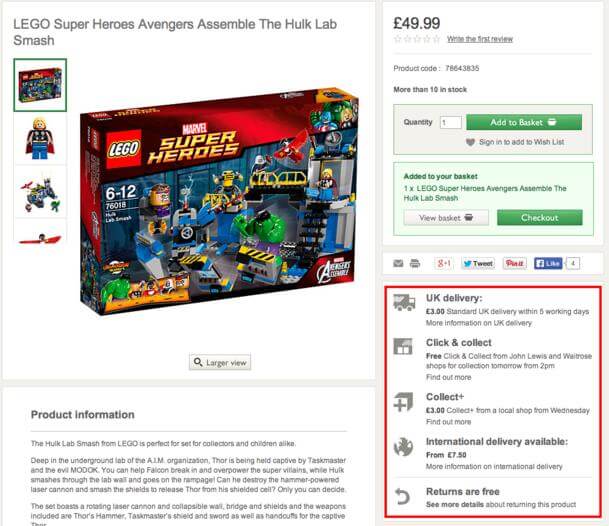
Or you might add it as a modal popup on your product page or cart page.
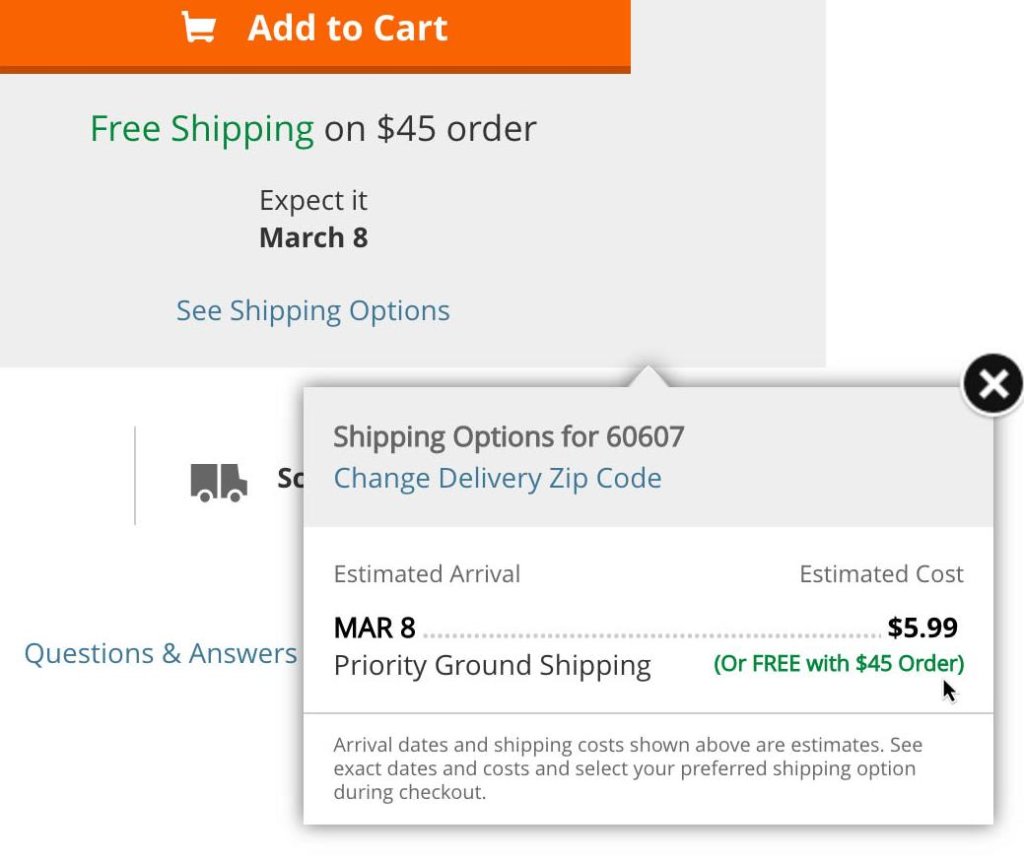
You could create a tab for shipping in your product description.
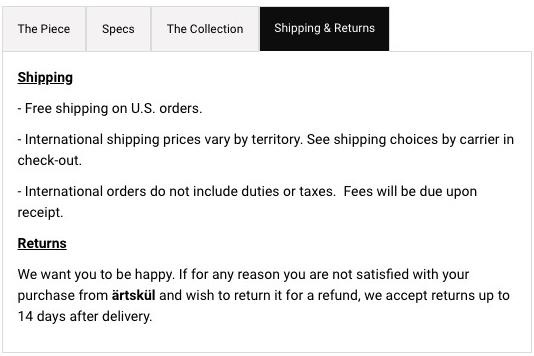
Or plaster it across your category pages.
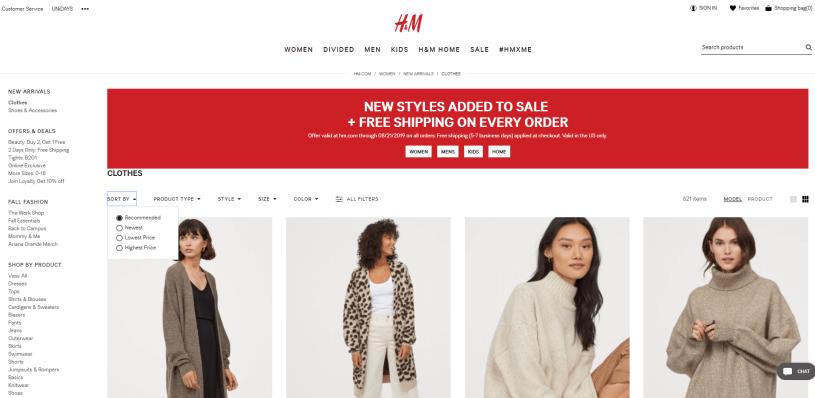
As you can see, none of these solutions are traditional FAQs, yet they address the same concerns that would lead customers to seek your FAQ page. The customer never feels the need to inquire about shipping policies because they already know about it.
Think beyond your product copy
Your copy is a powerful place to address your customers’ concerns. This is often the best place to preemptively answer your shoppers’ questions. For instance, we don’t know for sure, but we imagine Everlane found themselves answering a lot of sizing questions, so they added a little note in the product copy to give shoppers some context about the images.
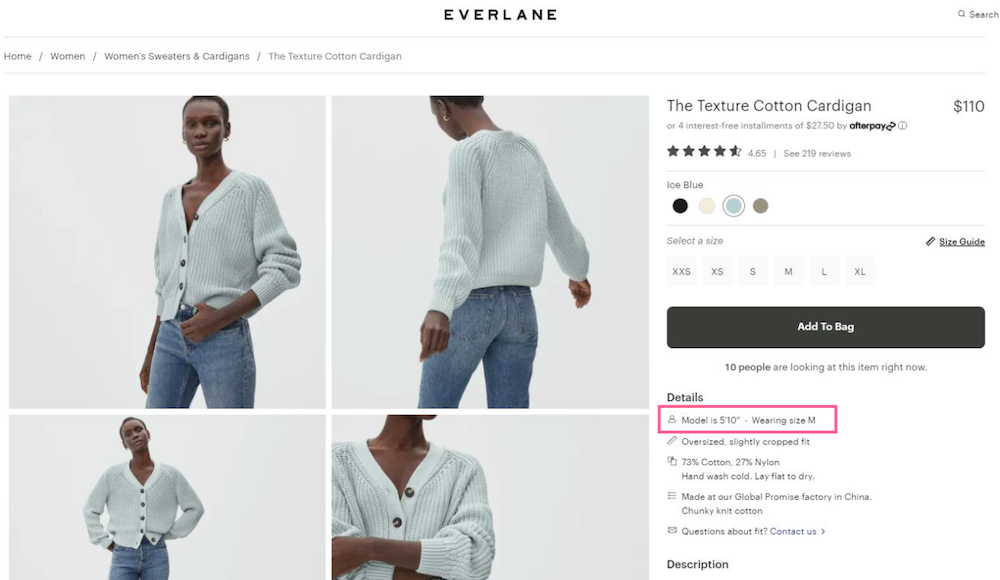
That said, your product copy is not the only place you address FAQs. You can serve key information in countless ways. Here are just a few places you could provide answers to your customers frequently asked questions:
In images and videos themselves: Don’t be afraid to create specific imagery and videos that directly address your shoppers’ concerns. Do customers wonder how your guitars sound? Make a video of someone playing a guitar. Do they wonder if they can eat your snack bars on-the-go? Show an image of someone munching as they power down the sidewalk.
Bellroy does a thorough job showing off their slim wallets by offering a video of someone filling it with items.
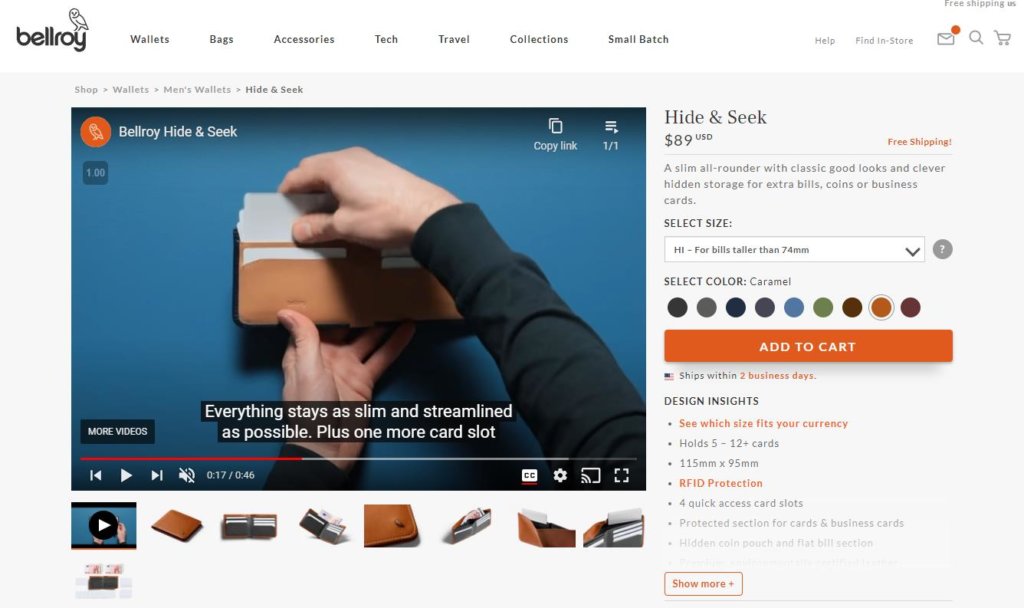
In your product titles: Don’t bother with pointless marketing adjectives like “Quality,” “Amazing,” or “Dynamic.” Instead, use words that address your shoppers’ concerns. Do they ask if your glass product is prone to scratching? If so, add “scratch-resistant” to your title.
Berghaus does a great job throwing some useful keywords (“insulated” and “waterproof”) into their product title so there’s no confusion about the jacket’s value.
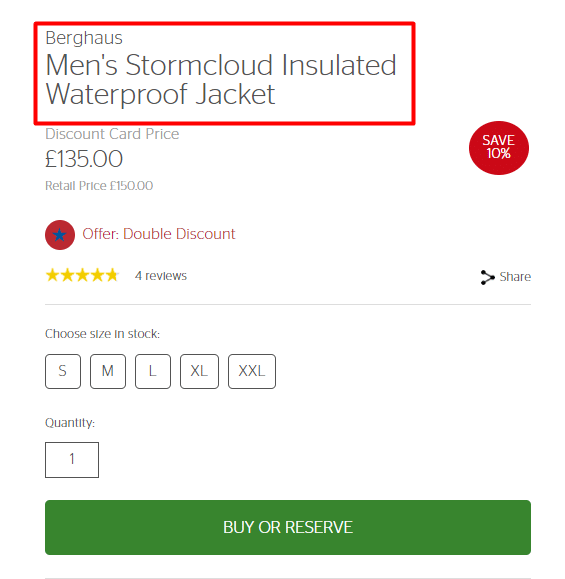
On your products’ packaging: In many cases, you can address concerns with the look and feel of your packaging. If your product is sustainable and environmentally friendly, use green and brown packaging that depicts scenes of a healthy environment. Simply adding the word “organic” to your package could reassure customers instantly.
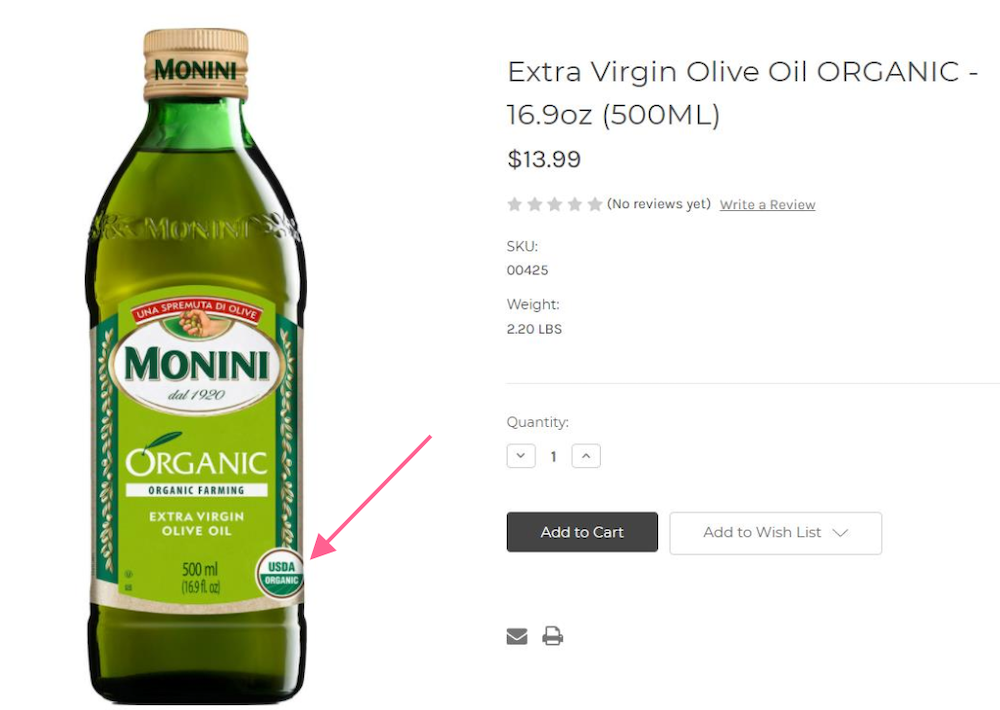
Abandoned cart emails: FAQ content can be great material to use in abandoned cart emails as well. It addresses objections or concerns and can remove roadblocks from the path to purchase.
Check out how this Kardiel abandoned cart email reminds the shopper of some key information: shipping price, delivery timeline, returns timeline, and financing options.
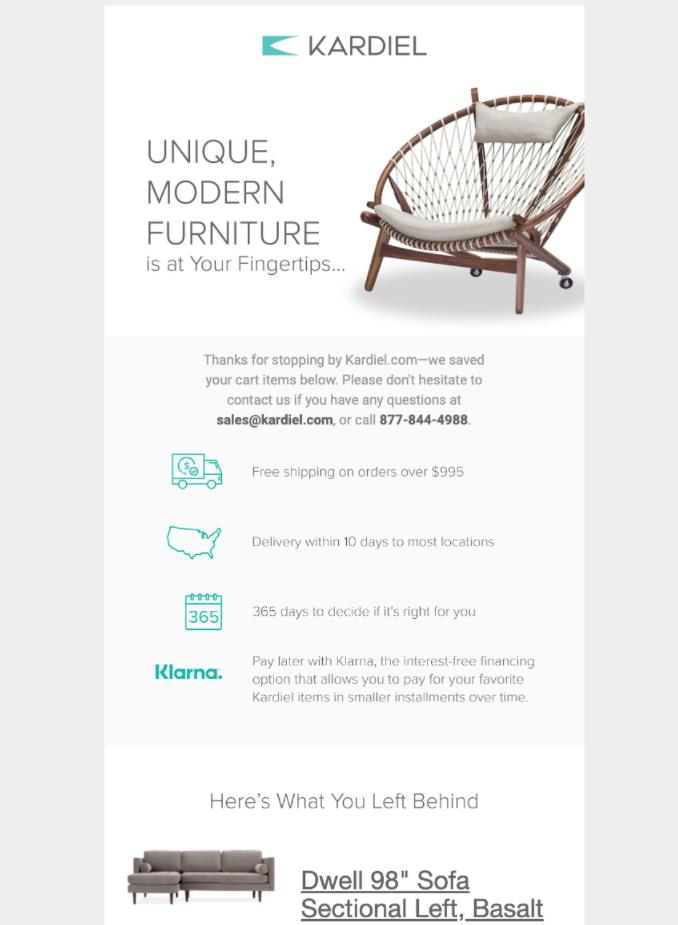
FAQ pages can’t hurt, right?
You might be thinking, “Well, I’ll just sprinkle my FAQs throughout my site in addition to my FAQ page. Now I’m covered, right?”
Not exactly. You see, ecommerce questions are typically specific to a product or group of products. This makes a central FAQ page less useful. Are you going to include every possible question on the same page, even if that question is specific to a product or its features? That would be a long page!
If you insist on using an FAQ page, keep it out of your primary navigation. That spot is valuable real estate. You might end up moving folks back up the purchasing funnel, which is not ideal.
So, Should You Use an FAQ Page or Not?
Once you’ve implemented the customer experience monitoring tactics listed above and you’re confident you’ve found out what your customers want—by listening to them, rather than by brainstorming FAQs internally—you’re armed with actionable data.
Make the indicated changes as closely as possible to the point where the disruption occurs:
- If you’re getting a steady stream of complaints about long waits for customer service, address the service issue with content where the visitor is looking for the answer, not on an FAQ page.
- If customers say your sizing charts are inaccurate, update the charts.
- If customers ask if your products are “natural” or “organic,” use those keywords in your titles and product descriptions.
In other words, if you take the high road (fix the problem), you won’t need to take the low road (post an FAQ page). Make buying from you the easiest thing your prospect has done all day. If there’s something a visitor needs to know, make the answer obvious on the product page, checkout page, or wherever the question naturally arises—not on a list of FAQs.
Nevertheless, there are some instances, some businesses, and some products or services where FAQs can be helpful. That’s fine.
Just don’t use FAQs to cover up ineptitude or laziness. Take the steps outlined here and you will find that listening and responding to your prospects is far more effective than posting a simple list of frequently asked questions.
To get more sales, answer questions at crucial points along the path to purchase. Take visitors by the hand and lead them toward trust and satisfaction.
They’ll not only be back for more, but they’ll bring their friends with them.
If you’re still not convinced, call The Good. We can take a look at your FAQ page together and show you—using your own ecommerce website—the truth of the matter.

Behind The Click
Learn how to use the hidden psychological forces that shape online behavior to craft digital journeys that delight, engage, and convert.

About the Author
James Sowers
James Sowers is the former Director of The Good Ventures. He has more than a decade of experience helping software and ecommerce companies accelerate their growth and improve their customer experience.